The Fourth Decade – 1967-1976
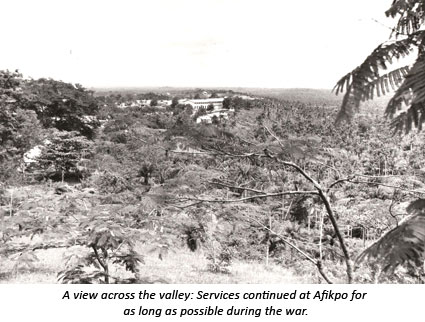
As the Fourth Decade of MMM’s history began, the civil war in Nigeria was causing great concern. Hostilities had begun following a coup in July 1966. The attempted secession of Eastern Nigeria as Biafra deeply affected the many health care facilities MMM had established in that part of the country as fighting drew closer to one location after another. This displaced the local people and created an influx of refugees who often sought shelter or food around the mission settlements.
On top of these anxieties, 1967 brought a serious decline in the health of our Foundress, Mother Mary Martin. By December, she was confined to bed. This marked the beginning of seven years of illness, with periods of lucidity and confusion, which marked the last years of her life. From the end of 1967, the direction of the Congregation was placed in the hands of her assistant, Sister Anne Moran, and the other members of the General Council. In accordance with the requirements of the Second Vatican Council, a Special General Chapter was convened, which would open in the autumn of 1969.
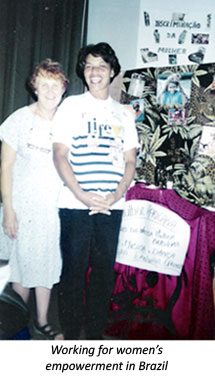 In 1963, following the death of Pope John XXIII, the newly-elected Pope Paul VI had asked for missionaries to turn their attention to the great needs of the Church in Latin America. In 1968, two MMMs were sent to Brazil to investigate a possible future for MMM there. In August 1969, two pioneers, Sister Brigid McDonagh and Sister Sheila Lenehan, set off to make our first foundation in Latin America. For each of them, this was the beginning of a life of service among the people of Brazil that would last over forty-five years.
In 1963, following the death of Pope John XXIII, the newly-elected Pope Paul VI had asked for missionaries to turn their attention to the great needs of the Church in Latin America. In 1968, two MMMs were sent to Brazil to investigate a possible future for MMM there. In August 1969, two pioneers, Sister Brigid McDonagh and Sister Sheila Lenehan, set off to make our first foundation in Latin America. For each of them, this was the beginning of a life of service among the people of Brazil that would last over forty-five years.
In September 1969, the second General Chapter opened. In the spirit of the Second Vatican Council this inaugurated a period of experimentation. It would subject every aspect of our way of life to evaluation, open ongoing reflection and discussion, involving every member of MMM. A lasting outcome of this evaluation was the attention turned to the question of holistic health care, the community dimension of health, and our relationship to our environment.
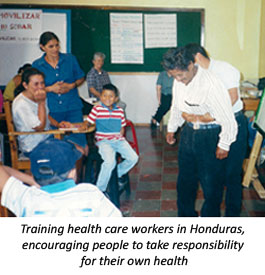 Among the criteria set by the Third General Chapter of MMM in 1974 was the policy that our service thrust for the future should be “towards community health, social and preventive medicine, rather than institutional medicine.” At the time this was quite a controversial option. It put many demands on our Sisters as we began the difficult task of balancing our commitment to hospital-based curative medicine with community-based preventive healthcare. The latter included a strong educational dimension, training of local health workers, and the involvement of local community leadership in planning health care strategies.
Among the criteria set by the Third General Chapter of MMM in 1974 was the policy that our service thrust for the future should be “towards community health, social and preventive medicine, rather than institutional medicine.” At the time this was quite a controversial option. It put many demands on our Sisters as we began the difficult task of balancing our commitment to hospital-based curative medicine with community-based preventive healthcare. The latter included a strong educational dimension, training of local health workers, and the involvement of local community leadership in planning health care strategies.
The option made by MMM in 1974 would be strengthened by the Alma Ata Declaration of 1978. The World Health Organization and UNICEF called on all health workers and the world community to support national and international commitment to primary health care (PHC) and to channel increased technical and financial support to PHC, particularly in developing countries.
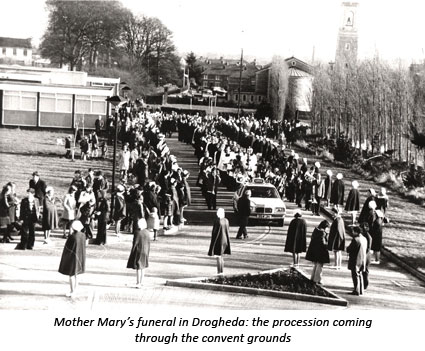
MMM had barely begun to grapple with the plans drawn up by the 1974 General Chapter, when another event underlined that a new era was breaking upon our history. Around 3:00 a.m. on 27 January 1975, our Foundress, Mother Mary Mary, slipped quietly from this earth to her heavenly home. Sheila Conachy, a student nurse at the International Missionary Training Hospital wrote:
“Her passing from us is like the passing of a great light of which we have seen but a shadow. Her seed planted and nourished shall bear great fruit.”
There followed memorable days of mourning when throngs of sympathizers crowded our Motherhouse and messages of condolence poured in from all corners of the world. After the impressive funeral that she was granted by the Corporation of Drogheda as a person who had received the Freedom of the Borough, we turned once more to the mandate of the General Chapter.
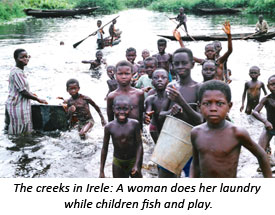 The Chapter had spelled out consolidation and future directions that led us to gradually withdraw from our commitments in Taiwan, Naples, and Spain.
The Chapter had spelled out consolidation and future directions that led us to gradually withdraw from our commitments in Taiwan, Naples, and Spain.
During this period, MMM had to say “sorry” to fifty-two appeals from bishops in twenty-two different countries to send Sisters. It was difficult to refuse but we had to stay focused on what we had already undertaken. In Nigeria, we had expanded our work much further north in the Diocese of Minna, with a rural health centre established in 1971 at Zungeru, on the road that wends northwards towards Kano. We also began hospital work in Ondo in western Nigeria in 1971 and took over a rural health centre at Irele in 1975.
In 1972, a novitiate was opened in Nigeria at Ibadan, and the first novices were professed in July 1974. Soon preparations were being made for a house in the city of Benin, from where all our work in Nigeria could be co-ordinated.
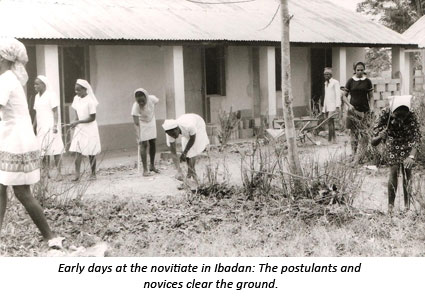
In Tanzania, a house was purchased in the rapidly-growing city of Arusha, from where our work in that region could be co-ordinated. New work was undertaken at Nangwa in an exciting programme of collaboration between MMM and the local government health authorities.There was also an extension of our work in Kenya.
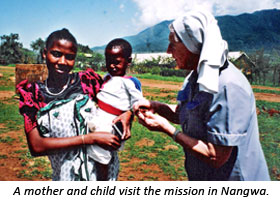
On 3 December 1976, feast day of Saint Francis Xavier, the great Patron of the missions, Sister Marie Conlon and Sister Rita Kelly left Kitale by landrover for a new mission at Aror in the Kerio Valley. They were last seen by some goats disappearing in a cloud of dust as they shot from Eldoret towards Iten.
As our Fourth Decade drew to a close, it was once again time to be thinking about preparations for another General Chapter, at which the experiments inaugurated by the Second Vatican Council would be further evaluated.
The Third Decade The Fifth Decade
< MILESTONES POSTS
